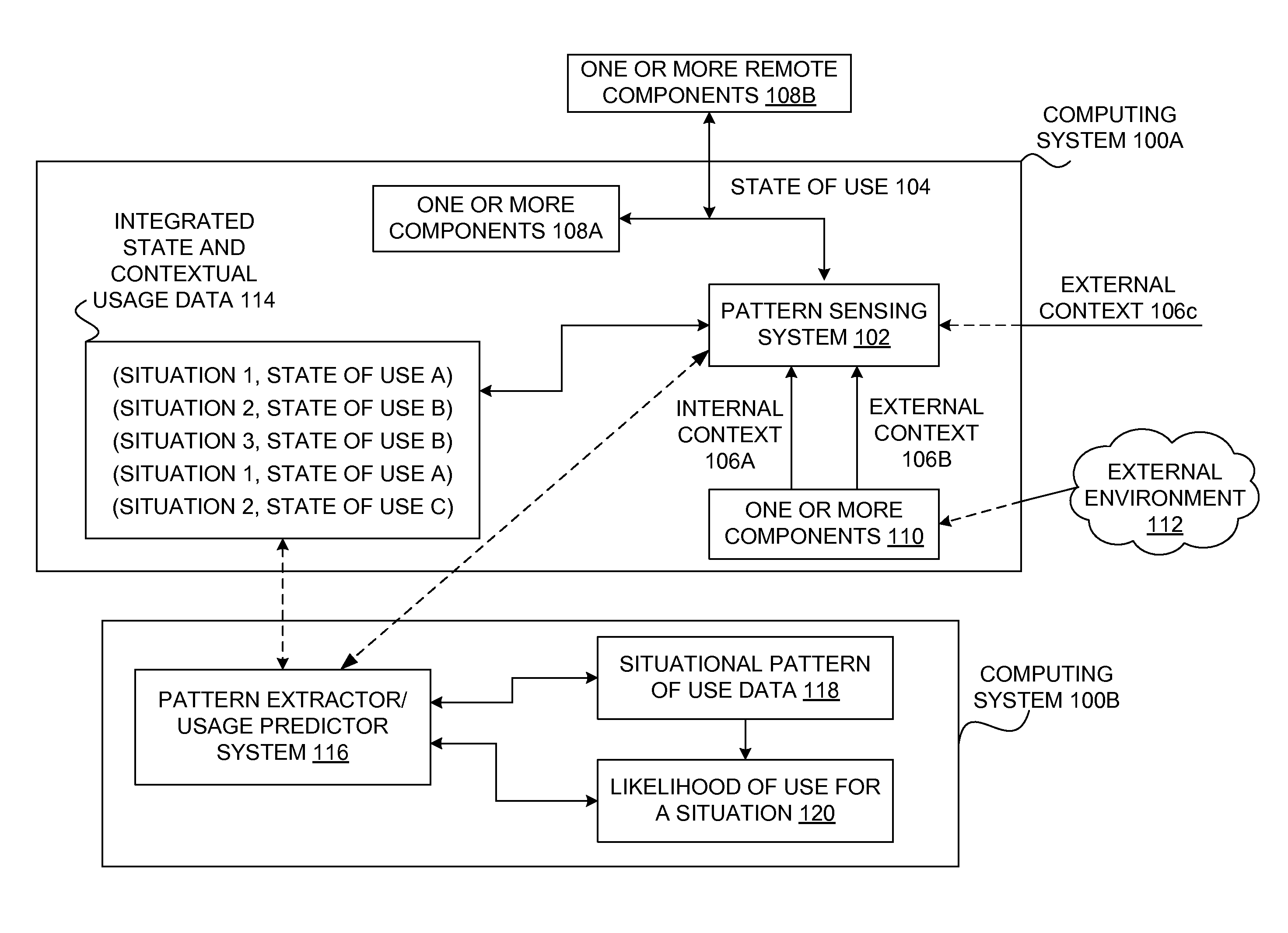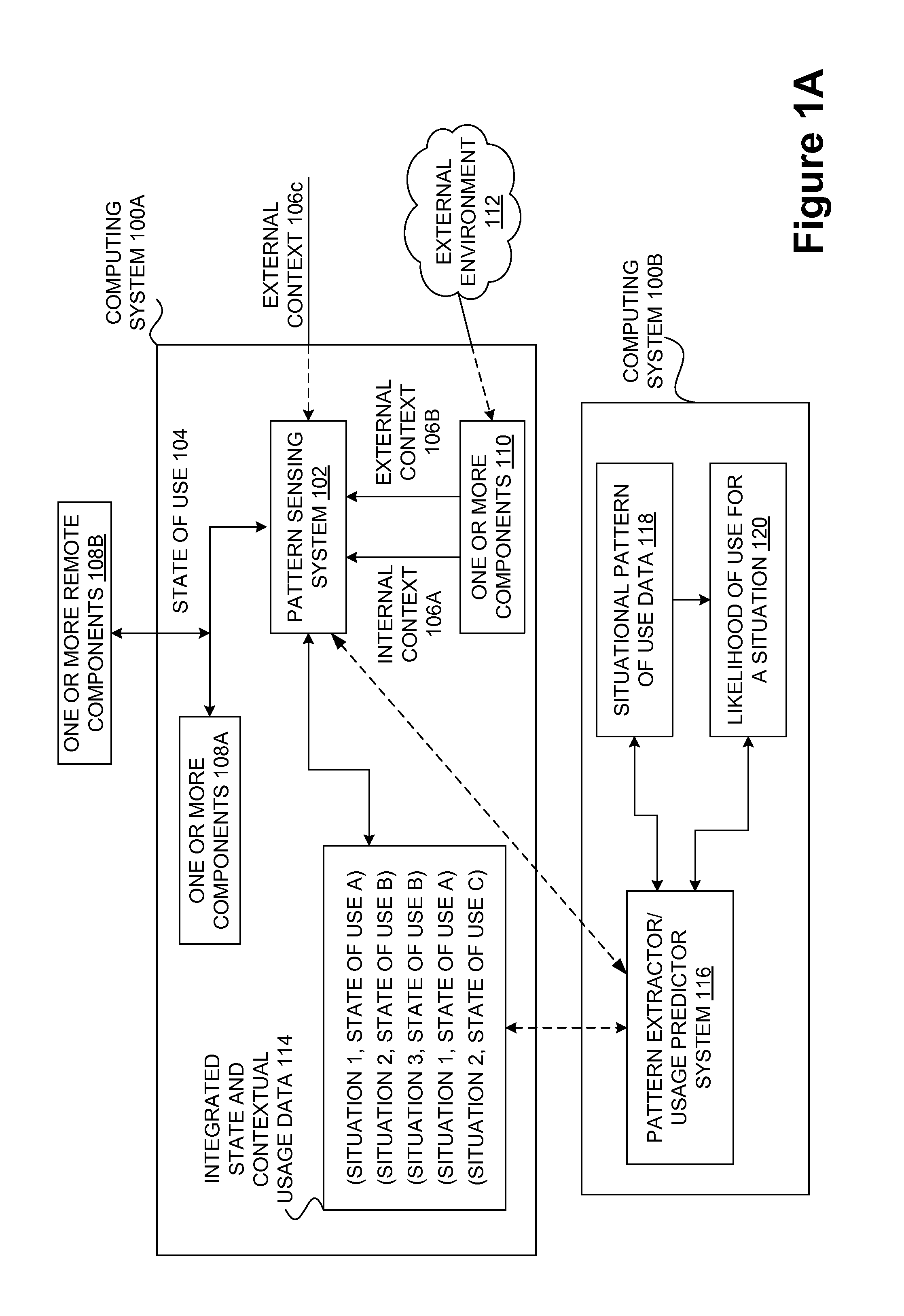Determining situational patterns of use for computing systems
a technology of situational patterns and computing systems, applied in data acquisition and logging, data switching networks, instruments, etc., can solve the problems of more complex computing systems that can store content, and achieve the effects of enhancing mobile devices and their use, enhancing computing systems, and intelligent design of mobile devices
- Summary
- Abstract
- Description
- Claims
- Application Information
AI Technical Summary
Benefits of technology
Problems solved by technology
Method used
Image
Examples
Embodiment Construction
[0031]As noted in the background section, mobile computing devices have become increasing more popular in recent years. Today, wireless, mobile and / or portable communication devices (e.g., Smartphones, cell phones, Personal Digital Assistants) are especially popular. In recent years, mobile devices have evolved to provide increasingly more functions. As such, wireless and / or mobile communication devices (e.g., cell phones, SmartpPhones) have been more recently developed which can offer similar functionality as that more traditionally offered by Personal Computers (PCs).
[0032]Despite these advances, mobile (or portable) devices still need to work with relatively smaller input / output devices (e.g., displays, screens, keyboards). As such, the enhanced processing power and functionality provided by the newer mobile devices has ironically resulted in frustrating some individuals as it has become increasingly more difficult to navigate through numerous applications and functions. As a res...
PUM
 Login to View More
Login to View More Abstract
Description
Claims
Application Information
 Login to View More
Login to View More - R&D
- Intellectual Property
- Life Sciences
- Materials
- Tech Scout
- Unparalleled Data Quality
- Higher Quality Content
- 60% Fewer Hallucinations
Browse by: Latest US Patents, China's latest patents, Technical Efficacy Thesaurus, Application Domain, Technology Topic, Popular Technical Reports.
© 2025 PatSnap. All rights reserved.Legal|Privacy policy|Modern Slavery Act Transparency Statement|Sitemap|About US| Contact US: help@patsnap.com



